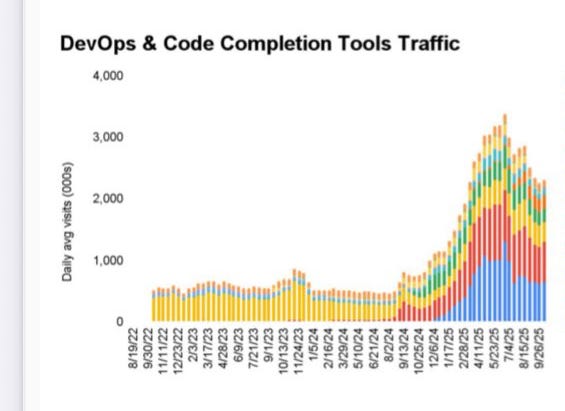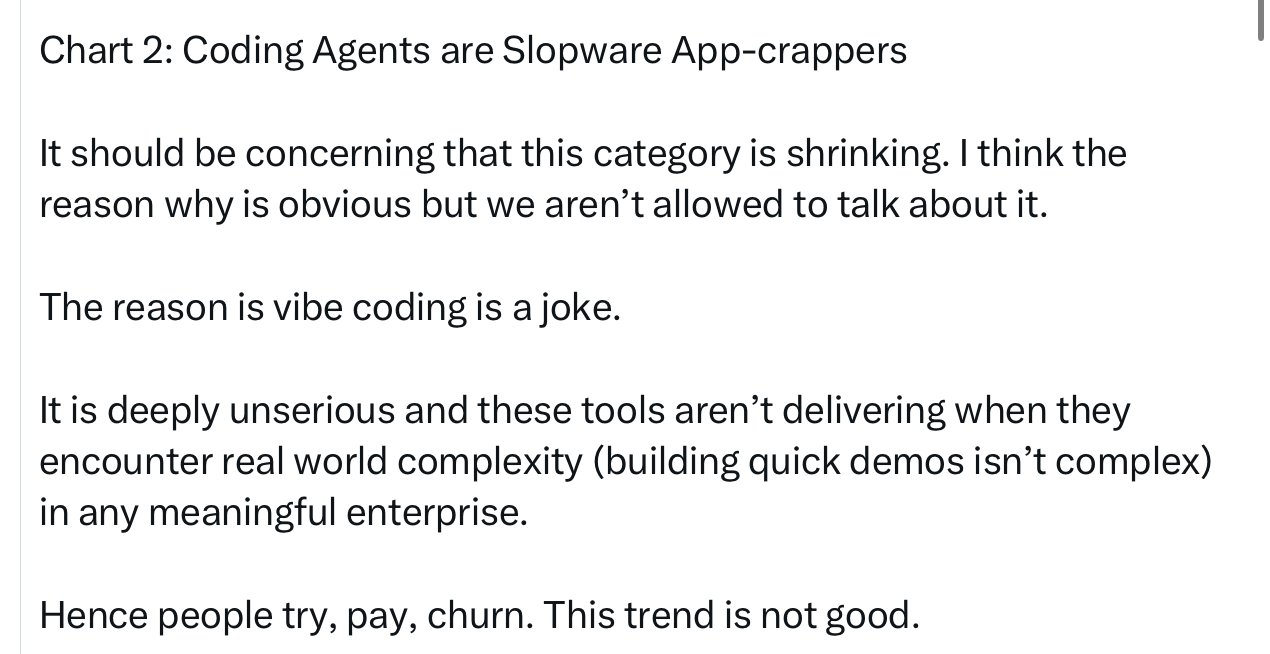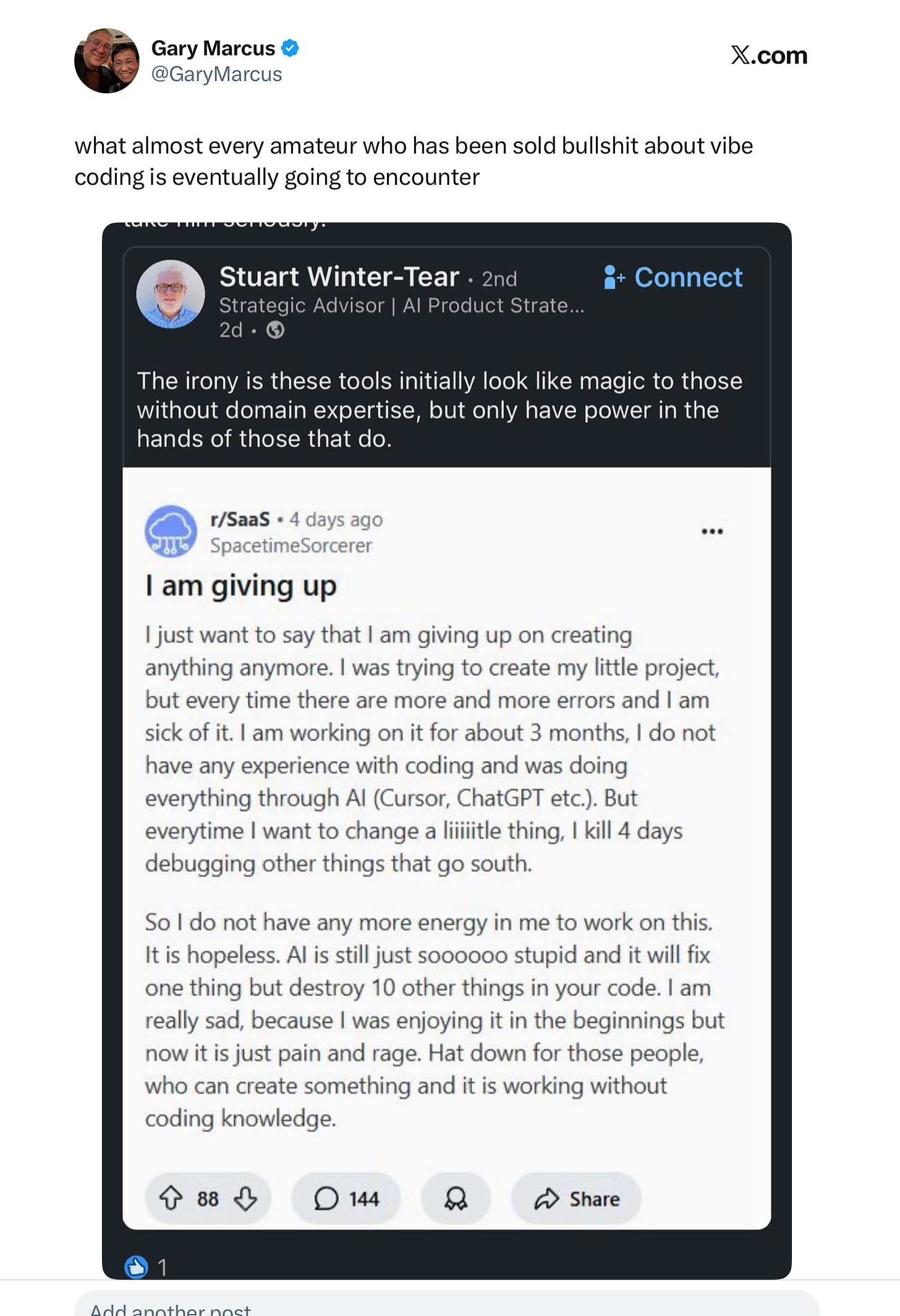Is vibe coding dying?
Amateurs might not be replacing teams of coders, after all
Remember how in October and in March I told you that vibe coding — in the sense of amateurs using large language models to write code to “build products that would have previously required teams of engineers” — would never be remotely reliable? And that such tools were fine for demos but not for complex apps in the real world? And that the code they wrote would be hard to maintain?
Customers are finally figuring that out.
So is the often-enthusiastic investor Chamath Palihapitiya, not known for his skepticism. Yesterday he posted some fascinating data on X, including this chart which shows that vibe coding usage has been declining for months, after an initial steep rise:
His analysis of this was brutal:
§
In September, software developer Mike Judge wrote a scathing essay about the vibe coding promise versus vibe coding reality:
§
The problem, as always, lies in generalizing outside the training distribution. Vibe coding can be fine if you are building something very familiar, but is less reliable for the unfamiliar. Even Andrej Karpathy, who literally invented the term vibe-coding, sees this:
§
The reality is that vibe coding experiments often start out great, and end badly:
Or as I put it in August:







I've got decades of experience in enterprise software development, across many paradigms and platforms. AI has become indispensable in my work, and AI can significantly amplify the productivity of a developer who knows what they're doing, but cannot deliver working code for non-trivial apps, much less develop production-quality, maintainable apps.
Vibe coding reminds me of the guys in the 90's who wrote a few VB macros in Excel and thought they were ready to start coding financial systems software.
Gertrude Stein deserves a shout-out in the context of this essay: "When you get there, there is no there there".